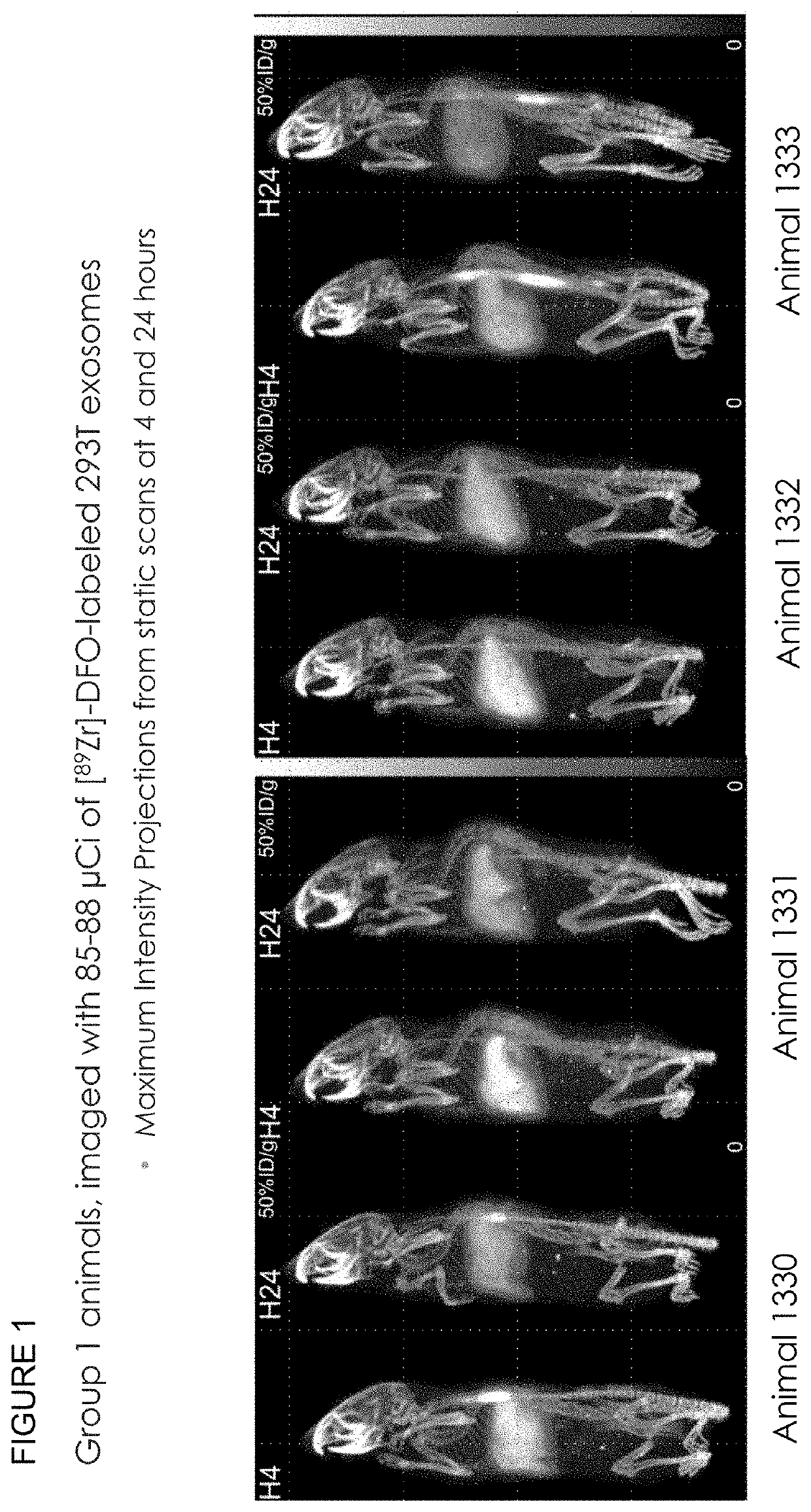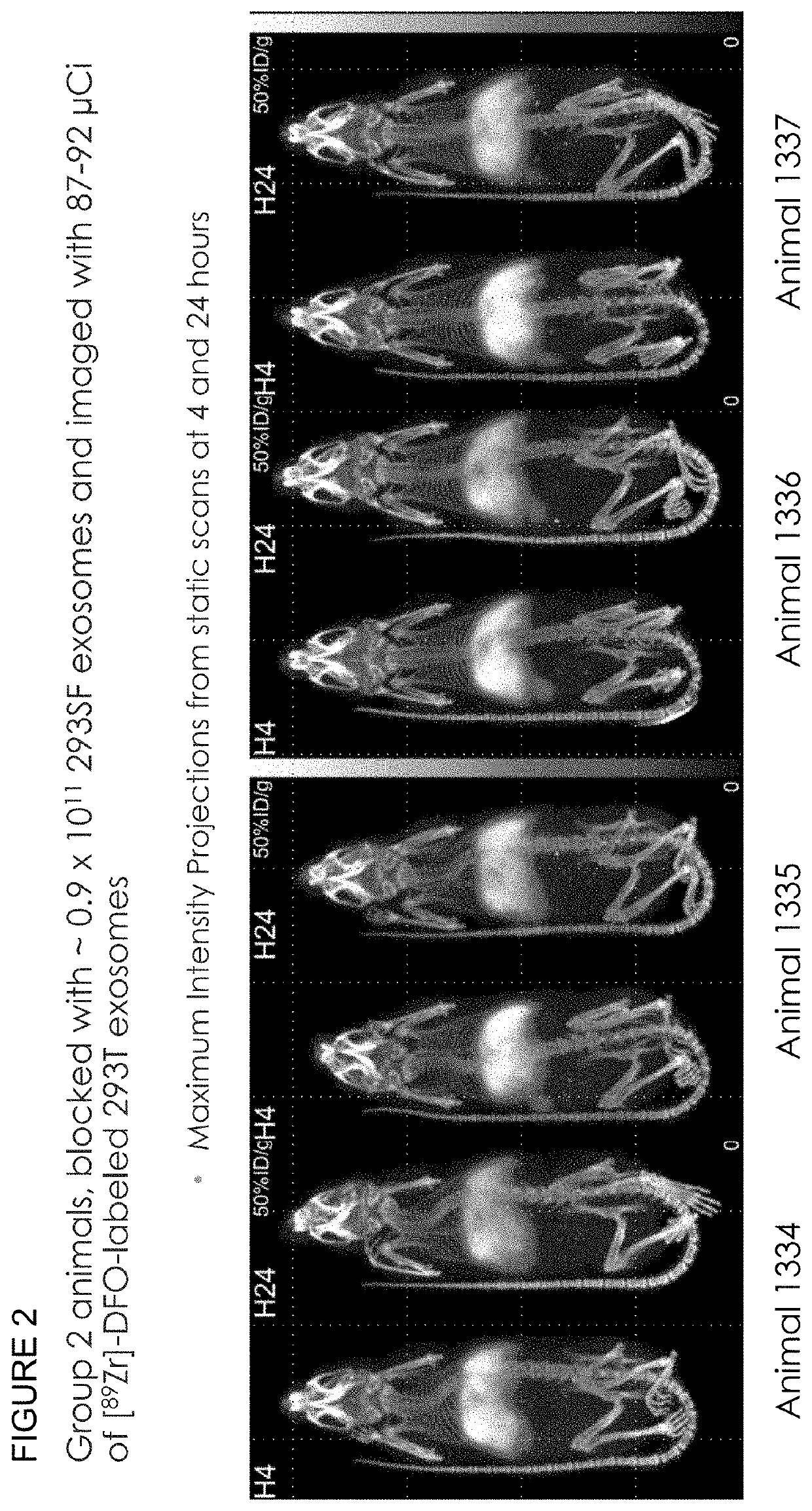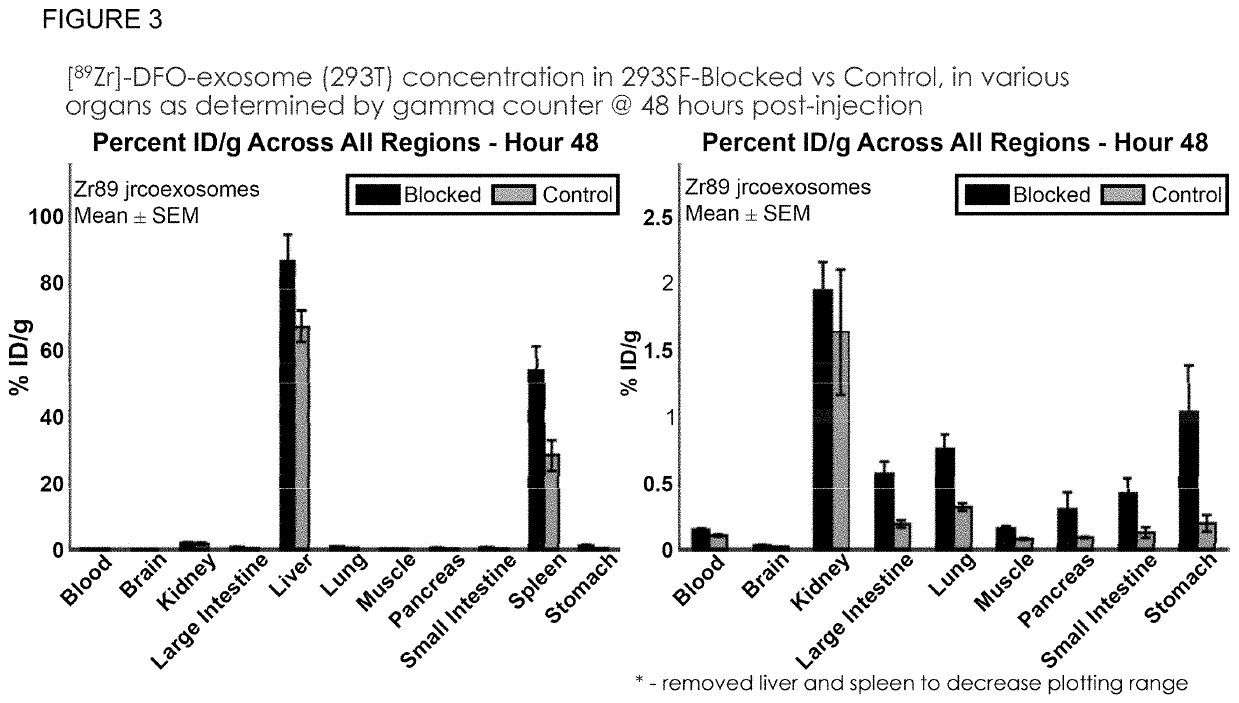Methods of suppressing delivery of exosomes to liver and spleen
a technology of exosomes and liver, applied in the field of exosomes, can solve the problems of toxic off-target side effects and reduce the delivery of exosomes to other tissues, and achieve the effect of reducing the delivery of exosomes and increasing the delivery of therapeutic exosomes
- Summary
- Abstract
- Description
- Claims
- Application Information
AI Technical Summary
Benefits of technology
Problems solved by technology
Method used
Image
Examples
example 1
ation of Unlabeled Exosomes Prior to Labeled Exosomes to Determine Alterations in Tissue-Specific Uptake
[0334]To determine whether exosome pre-treatment could lead to increased uptake in tissues beyond the liver and spleen, the following experiment was performed. Conditioned culture media from 293T cells was collected and centrifuged at 300-800×g for 5 minutes at room temperature to remove cells and large debris. Media supernatant was then supplemented with 1000 U / L Benzonase® and incubated at 37° C. for 1 hour in a water bath. Supernatant was collected and centrifuged at 16,000×g for 30 minutes at 4° C. to remove residual cell debris and other large contaminants. Supernatant was then ultracentrifuged at 133,900×g for 3 hours at 4° C. to pellet the exosomes. Supernatant was discarded and residual media was aspirated from the bottom of the tube. The pellet was then resuspended in 200-1000 μL PBS (−Ca −Mg).
[0335]To further enrich exosome populations, the pellet was processed via sucro...
example 2
ation of Unlabeled, Non-Therapeutic Exosomes Prior to Labeled Exosomes in Mice to Determine Localization to Endothelium and Delivery of RNA
[0349]The exosome populations are intravenously administered to mice via tail-vein injections using a syringe. Unlabeled exosomes are diluted to a density of 106 exosomes / ml and DiI-C16-labeled exosomes harboring Cy3-labeled GAPDH siRNA are diluted to a density of 105 exosomes / ml using standard saline buffer at 37° C. such that 1 ml of volume, are delivered per tail vein injection. The exosome solutions are loaded into a 5 cc syringe, 26 gauge needle and injected into the subject through the tail vein.
[0350]At 8 weeks of age, mice received tail-vein injections of unlabeled exosomes and DiI-C16-labeled exosomes harboring Cy3-labeled GAPDH siRNA or DiI-C16-labeled exosomes harboring Cy3-labeled GAPDH siRNA alone. 1 mL or 106 exosomes of unlabeled exosomes are injected 15, 30 or 60 minutes prior to injection of 1 mL or 105 exosomes of DiI-C16-labele...
example 3
ation of Exosomes Containing Let-7a miRNA in a Human Tumor Xenograft Model for Tracking Tissue Distribution of Exosomes and Tumor Growth
[0351]Platelets are transfected with synthetic Let-7a. Fluorescently-labeled exosomes containing Let-7a, and exosomes from untransfected platelets are purified from culture supernatants according to methods described above. Luciferase-expressing HCC70 cells (2×106) are injected subcutaneously into the mammary fat pads of 5-week-old RAG2− / − mice. Four weeks after transplantation, tumors were sized using an IVIS (Xenogen, Hopkinton, Mass.). Experimental mice with mammary fat pad transplanted luciferase-expressing HCC70 cells are intravenously injected with 150 μg of purified exosomes lacking Let-7a, and after 60 minutes, 150 μg of purified fluorescently-labeled exosomes expressing Let-7a are administered intravenously. Control mice with mammary fat pad transplanted luciferase-expressing HCC70 cells are intravenously injected with saline, and after 60 ...
PUM
| Property | Measurement | Unit |
|---|---|---|
| time | aaaaa | aaaaa |
| time period | aaaaa | aaaaa |
| diameter | aaaaa | aaaaa |
Abstract
Description
Claims
Application Information
 Login to View More
Login to View More - R&D
- Intellectual Property
- Life Sciences
- Materials
- Tech Scout
- Unparalleled Data Quality
- Higher Quality Content
- 60% Fewer Hallucinations
Browse by: Latest US Patents, China's latest patents, Technical Efficacy Thesaurus, Application Domain, Technology Topic, Popular Technical Reports.
© 2025 PatSnap. All rights reserved.Legal|Privacy policy|Modern Slavery Act Transparency Statement|Sitemap|About US| Contact US: help@patsnap.com



